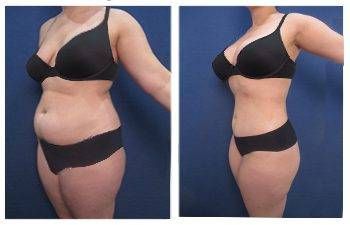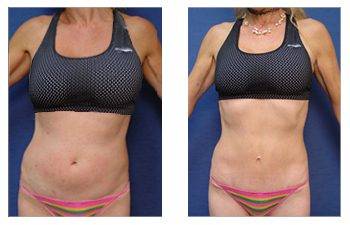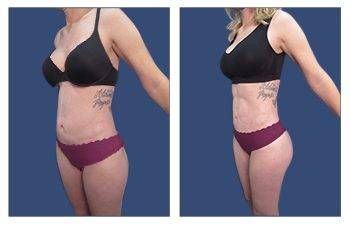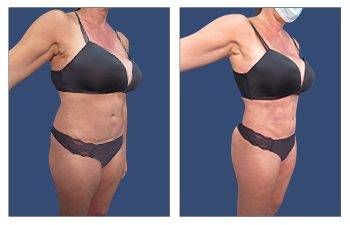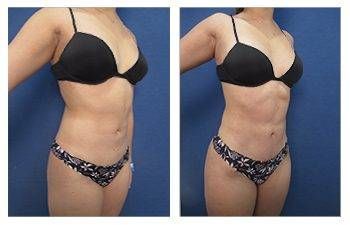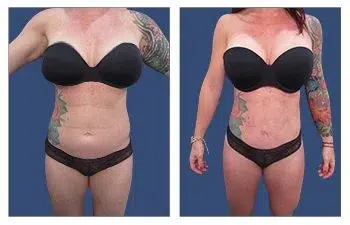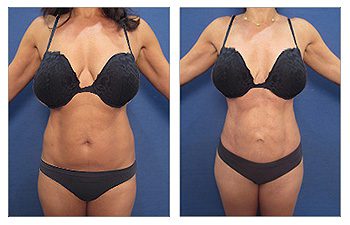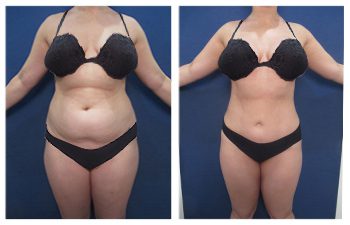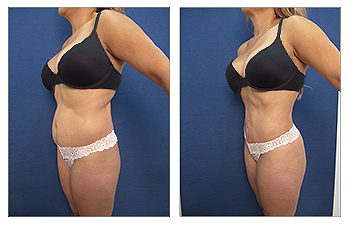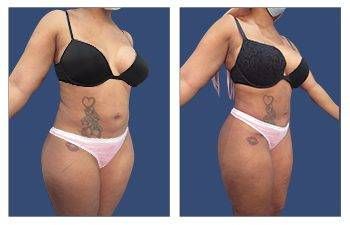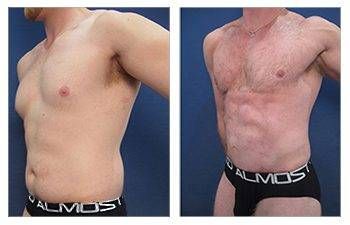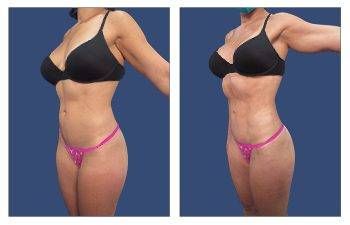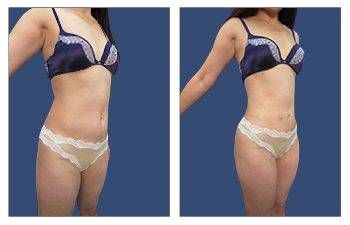Have you ever gazed at your reflection and wished for a sleeker, more toned midsection? You’re not alone. Types of tummy tucks, known as abdominoplasty, have been the go-to solution for many chasing this dream.
Akin to an artist chiseling a sculpture, surgeons skillfully remove excess fat and skin, crafting that sought-after flat belly. Did you know there isn’t a single solution that fits all?
We’ll explore everything from the standard full tummy tuck without muscle repair to its cousin with muscle repair, each uniquely designed based on your specific needs.
The journey doesn’t stop there! Ever heard of mini or extended versions? How about reverse ones?
Hang on; we’re about to dive deep into these amazing procedures that promise a fresh boost of confidence in your body. Believe me, it’s just getting started.
One of the most common cosmetic procedures is a tummy tuck. But it is also one of the most misunderstood surgeries because most people do not know many types of tummy tucks. A top surgeon can artistically render the belly button naturally during tummy tuck surgery. This tiny structure should remain attractive and look distorted. If you observe belly buttons the next time you are at the poolside or beach, you will see how often poorly positioned and misshapen they are following tummy tucks. The belly button remains a dead giveaway following a conventional tummy tuck. At SurgiSculpt, the belly button receives the highest priority, and its appealing aesthetics are either preserved or artistically rendered. The aesthetics of the belly button should guide which tummy tuck surgery is right for you. So, let’s look at the different types of tummy tucks.
Full Tummy Tuck Without Muscle Repair
A common misconception is that a full tummy tuck always includes the repair of the abdominal muscles. The first function of a full tummy tuck is to eliminate moderate to extensive skin excess. To maximally eliminate the skin redundancy, your abdominal skin must be elevated to your rib cage; thus, your belly button must be “undone” temporarily. In this case, they do not need to be addressed if your muscles are not loose or separated.
The main advantage of the full tummy tuck without muscle repair is that you can expect a speedy recovery and return to work within two weeks after surgery. The disadvantage to your surgeon is that the belly button needs to be appropriately inset by sewing it down to your abdominal muscles to recreate an aesthetically pleasing appearance, an innie belly button.
Full Tummy Tuck With Muscle Repair
A full tummy tuck with muscle repair is probably the best-known cosmetic surgery for the abdomen. It includes not only the elimination of moderate to extensive skin redundancy but tightening of the abdominal muscles. This tummy tuck is similar to the one described above but involves sewing the muscles together like a corset. Sewing in the muscles corrects muscle looseness and automatically pulls in the belly button.
The advantage of this tummy tuck is avoiding additional steps to sew down the belly button, performed in the tummy tuck presented above to get a beautiful inner belly button. The disadvantage of the full tummy tuck with muscle repair is a prolonged recovery of 3 to 4 weeks before returning to work.
Mini Tummy Tuck
A mini tummy tuck is performed when the removal of excess skin is limited to below the belly button. This tummy tuck does not address muscle looseness or upper abdominal skin redundancy, and the belly button is not released from the muscle. The advantage of the mini tummy tuck is that the original belly button is not disrupted and is minimally pulled down, creating an attractive upper belly button hood during the repair of the skin incision line positioned in the pubic region.
The best candidates for the mini tummy tuck are patients with minimal to moderate skin redundancy of the lower abdomen that cannot be addressed by liposuction or scarless skin tightening. It also helps if the patient possesses a high-positioned belly button. Finally, patients can expect to return to routine activities as early as 1 to 2 weeks following surgery.
Reverse Tummy Tuck
A reverse tummy tuck is a little like the mini. This procedure may need to be performed if excess skin is localized to the upper abdomen above the belly button and in patients with a low-positioned belly button. The reverse tummy tuck uses strategic incisions located under the breast crease. It allows for the pulling up of skin redundancy, thus the name of a reverse tummy tuck, to eliminate upper abdominal skin redundancy. This unique tummy tuck also avoids the release of the belly button and tends to pull it up minimally.
The reverse tummy tuck is ideal for patients with isolated upper belly loose skin and a low-positioned belly button.
Extended Tummy Tuck
The extended tuck is an expanded version of the full tuck with or without muscle repair. The reason for extending the tummy tuck is moderate to extensive lower back and flank fullness. The key indicator is prominent love handles. This surgery eliminates skin and soft tissues that would be retained by performing a standard tummy tuck. It extends the traditional tummy tuck incisions around the sides and back. If your surgeon tells you you need one of these tummy tucks, it will be essential for smooth lines. This will also avoid “dog ears” skin puckers, typical of an incision line that is too short or leaves too loose skin.
The additional length of the incision line in an extended tummy tuck means an additional week of recovery.
Combining A Full Tummy Tuck And Liposuction
Traditionally, a full tummy tuck cannot always be safely combined with abdominal liposuction. However, our SurgiSculpt surgeons have recently developed safety surgical protocols. These protocols allow the combination of a full tummy tuck and HD liposuction in a single surgery. We call this the Modified abdominal skin resection.
Now, it is possible to not only eliminate moderate to severe amounts of skin while getting rid of the fat comprehensively. Abdominal muscle highlights are possible with VASER liposuction. For the first time, even if you feel your underlying muscles are well hidden, VASER high-definition liposuction will transform you into a superhero in several hours.
Unraveling the Different Types of Tummy Tucks
You might be surprised that a tummy tuck, one of the most common cosmetic procedures, isn’t just a ‘one size fits all’ approach. Different types of tummy tucks are designed to cater to specific needs and body shapes.
Diving into the Full (Standard) Tummy Tuck
The full or standard tummy tuck is your typical go-to for this procedure. This type focuses on removing excess skin from above and below the belly button, ensuring you get an even tone throughout your abdomen.
This process doesn’t involve muscle repair, so recovery time is generally quicker than other types. It’s like packing up after a beach day – you leave no trace behind but can easily bounce back for work tomorrow.
Exploring the Full (Standard) Tummy Tuck with Muscle Repair
Now, imagine if that beach day involved building sandcastles. You’d need more effort and possibly more time to recover afterward, right? That’s similar to what happens in a standard tummy tuck with muscle repair.
In addition to skin removal, muscles that have been stretched or separated due mostly to pregnancy or weight fluctuations are brought together and stitched up tightly, giving you smoother and firmer abs.
Mini vs Extended: Comparing Two Distinctive Types of Tummy Tucks
Unpacking the Miniature Version – The Mini Tummy Tuck
A Mini tummy tuck, despite its cute name, packs a punch when it comes to dealing with sagging skin below the belly button. It’s like using a small yet efficient vacuum cleaner that only targets specific areas for cleaning.
This procedure is perfect if you need just some tightening in your lower abdomen without much downtime. So you can go back to conquering your world sooner.
Mini vs. Extended – Comparing Two Distinctive Types of Tummy Tucks
When you’re looking to say goodbye to stubborn belly fat, tummy tucks come in as the knight in shining armor. But here’s a little twist: not all tummies (or knights) are created equal. In the world of cosmetic surgery, we’ve got two major players that steal the limelight when it comes to contouring your midsection – The Mini and Extended Tummy Tuck.
Unpacking the Miniature Version – The Mini-Tummy-Tuck
The Mini-Tummy-Tuck, or mini tummy tuck for those who like less cutesy names, is your go-to if excess skin removal is limited only below your belly button. Picture it like this: You want a touch-up on an already good-looking portrait instead of painting a whole new one.
A favorite among moms bouncing back post-baby or folks showing off their weight loss results, this procedure involves making small incisions and tightening lower abdominal muscles. And what about recovery? It’s akin to taking a short vacation, typically faster than its extended counterpart, largely because there’s less territory being conquered during surgery.
If you need more details about how this operation can give your body that smooth finish you crave without undergoing extensive surgical procedures, don’t hesitate to explore our comprehensive guide on Mini-Tummy-Tucks.
Unfolding the Expanded Version – The Extended-Tummy-Tuck
Moving onto our second star player: the Extended-Tummy-Tuck. For those who are all-in on transformation, the Extended-Tummy-Tuck is your ticket. An extended tummy tuck is like a house renovation project – it addresses more areas than just your belly.
This procedure dives deeper and wider into reshaping your body contour. It tackles your abdomen and extends its magic to lower back and flank fullness. Picture yourself draped in an elegant dress with a newly sculpted silhouette from front to back; that’s what you get.
Just keep in mind,
The Unique Reverse Tummy Tuck
When discussing tummy tucks, most people think of the classic procedure that targets excess skin and fat below the belly button. But what if your problem area is actually above it? That’s where a reverse tummy tuck comes into play.
This isn’t your everyday nip and tuck; it’s like taking the scenic route when you’re used to hitting up highways. It flips things on their head – quite literally. Let me explain…
What Exactly Is a Reverse Tummy Tuck?
A reverse tummy tuck, as its name suggests, reverses things. Instead of starting from down under (the lower abdomen), this procedure starts up top around the chest or breastbone area. And why does it start there? Because that’s where stubborn folds of sagging skin often hang out after significant weight loss or multiple pregnancies.
If you’ve got extra baggage in this upper region but are pretty happy with how things look below deck (i.e., beneath your belly button), then voila. You may be an ideal candidate for a reverse TT.
The How-To: Nuts & Bolts of The Procedure
In layman terms, here’s how this process works: An incision is made along the inframammary fold – sounds fancy, right? But all I’m talking about here is making an incision at precisely where women typically wear their bra line.
The next step involves lifting off layers of skin upwards towards one’s chest, allowing us to bid adieu to excess flab residing there while leaving behind smoother contours. Remember, this procedure specifically targets the upper abdomen region above the belly button, and that’s a unique feature of it.
But What About Recovery?
I hear you ask: “Surely there must be a catch.” Well, not really… but let me tell you about recovery time anyway. Post-op, your physique requires time to mend.
Typically, you’ll begin to feel like your old self again after about two weeks. Recovering fully could take up to six weeks or even more.
FAQs in Relation to Types of Tummy Tucks
Are there different types of tummy tucks?
Yes, there are. You can choose from a full or standard, mini, extended, or reverse tummy tuck, depending on your specific needs.
What is the best type of tummy tuck?
The “best” kind hinges on your goals and current body condition. A consultation with a professional will help you pick the right one.
What is the difference between a tummy tuck and a Panniculectomy?
A panniculectomy removes excess skin and fat without tightening abdominal muscles, whereas a typical stomach-tightening operation does both.
What is the newest method for getting my belly tightened up?
The latest technique uses radiofrequency energy to tighten loose skin and remove excess fat via liposuction.
Conclusion
We’ve explored many options, from the classic full tummy tuck to its muscle-repairing variant. You now know that types of tummy tucks are as diverse as they come.
The mini version’s perfect for those with limited excess skin below the belly button, while an extended one goes all out tackling lower back and flank fullness.
A reverse procedure is your pick if the upper abdomen is your concern. Each is unique in its own way, catering to different needs!
We hope this has made picking the right path easier for you. After all, confidence in our bodies should never be compromised! So make an informed choice and take that first step towards your body sculpting goals today!



